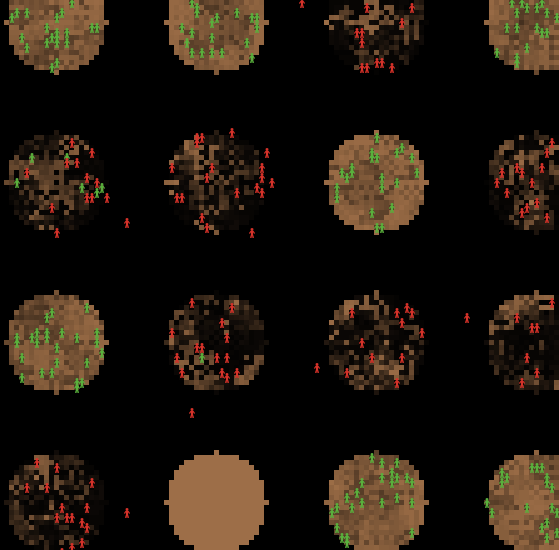TeachingBase
NetLogo: Island World
This model simulates the evolution of populations in an environment that is spatially structured, which means that resources and populations are not distributed completely randomly or evenly across the whole world. In such a situation, several evolutionary mechanisms operate.
Agents are distributed randomly to resource areas, and agents can leave resource-poor areas. The interaction of natural selection, migration, founder effects, and isolation, allows, under certain environmental conditions, the evolution of local populations of sustainable agents, even at low initial frequencies in the global population.
The structured environment ensures that the total population is divided into several subgroups and that natural selection can act on several levels (multilevel selection): Within populations, “greedy” agents are selected and sustainable ones die out. However, when local populations of exclusively sustainable agents develop and are sufficiently stable and isolated, these populations persist and the frequency of sustainable agents in the total population increases.
After conducting several experiments with the model, students transfer the concepts and processes in the model to processes in human evolutionary history and to the evolution of virulence in host-pathogen systems.

- Teaching material type Analogy mapping, Computer Model, Full lesson plan
- Concepts Evolution, founder effect, Multilevel Selection
- Subject areas Biology, Computer Science, Geography, Health, Human Evolution, Math
- Suitable Grade Levels 9-12, Undergraduate

